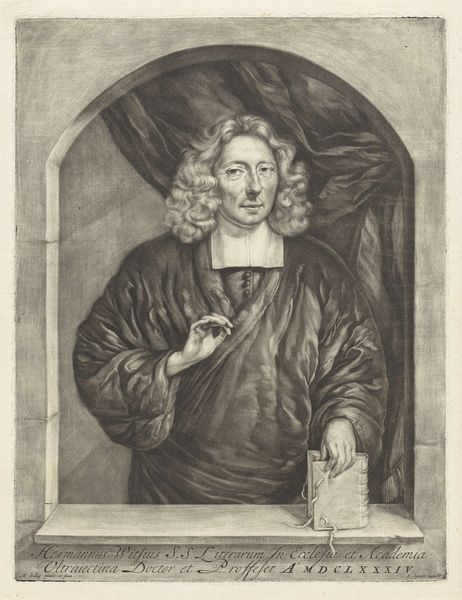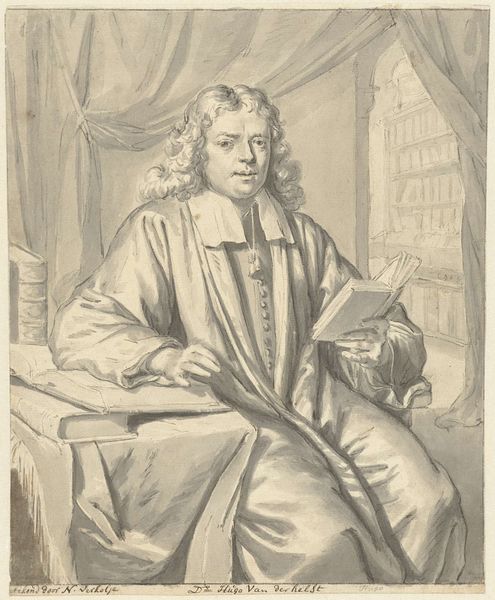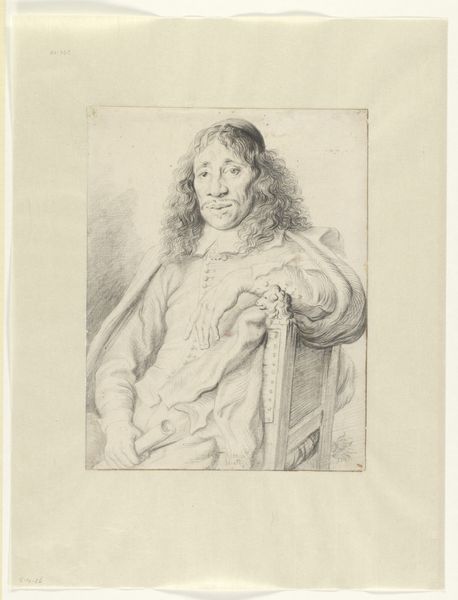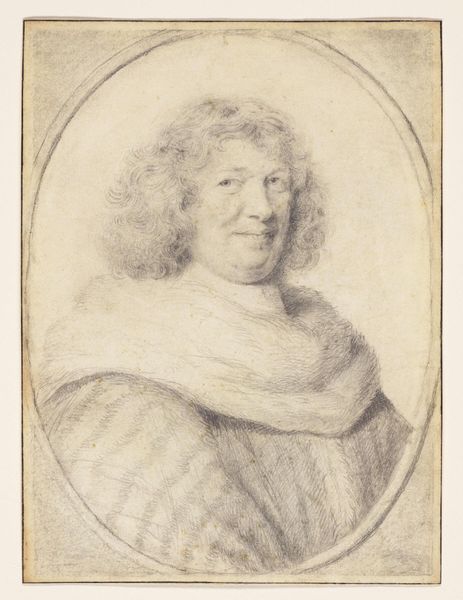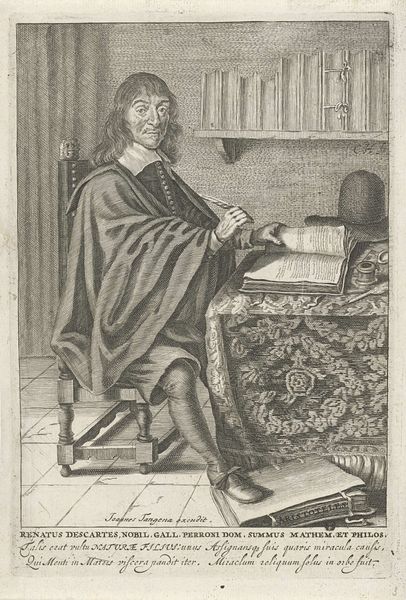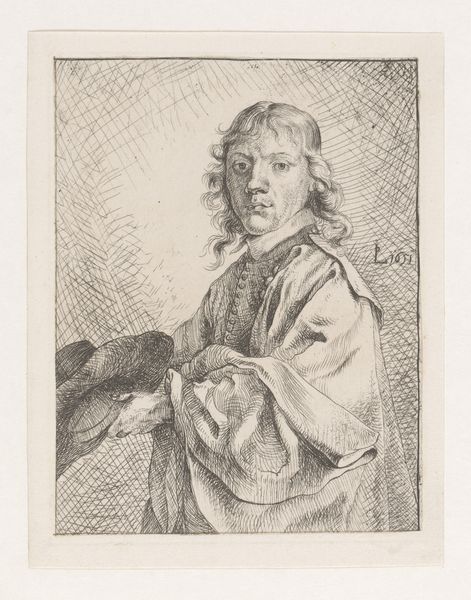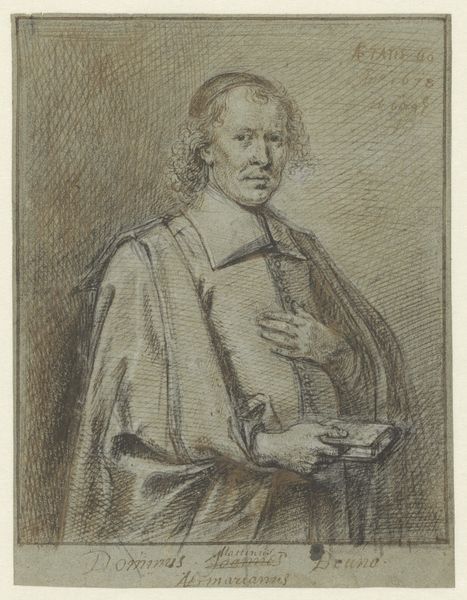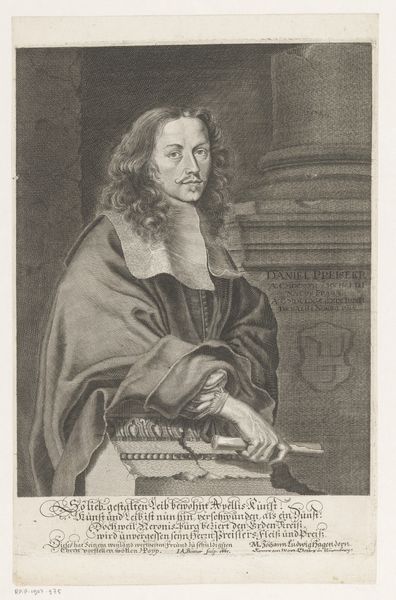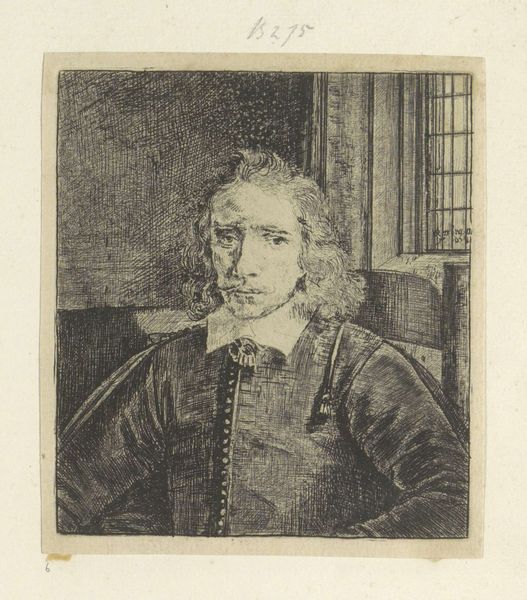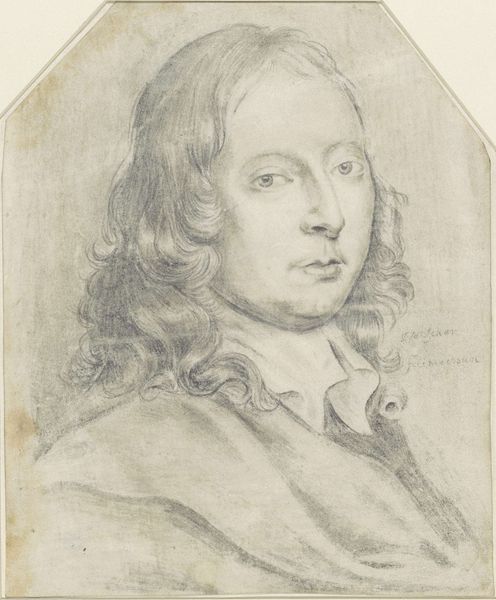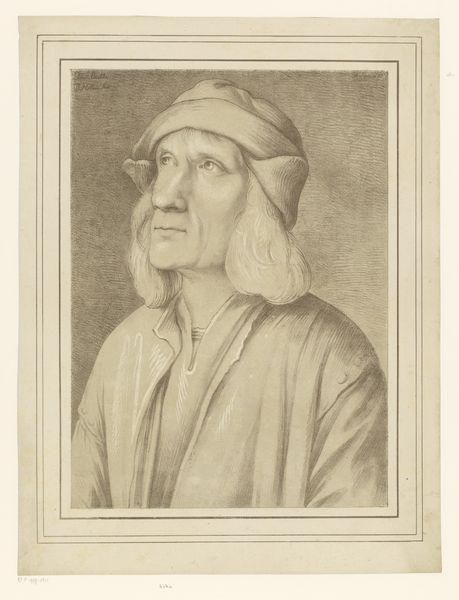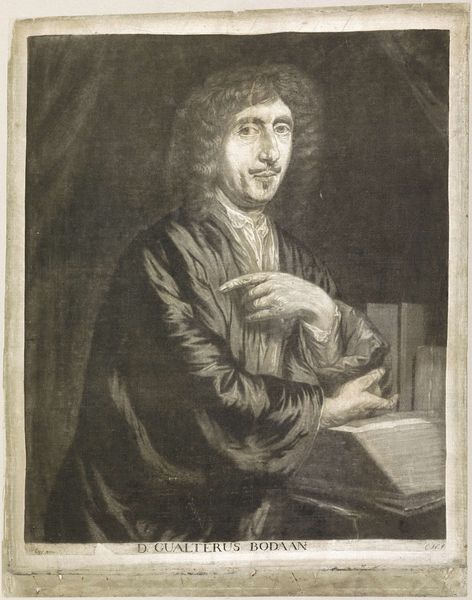
drawing, pencil
#
portrait
#
drawing
#
dutch-golden-age
#
figuration
#
pencil drawing
#
pencil
#
portrait drawing
Dimensions: height 341 mm, width 268 mm
Copyright: Rijks Museum: Open Domain
Curator: Let's turn our attention to this subtle pencil drawing titled "Portret van C. te 's-Gravezande" dating back to 1666, attributed to Dirk Druyf. It’s a fascinating window into the Dutch Golden Age and portraiture of the time. Editor: It has such an ethereal quality, doesn’t it? The pencil work is so delicate, creating a soft, almost dreamlike representation of the sitter. The textures are really interesting, especially the fall of light across the robe. Curator: Indeed. And it reflects, perhaps, the subject's station. Note the pose: relaxed, confident, beside what appears to be a table with writing implements and open books – implying intellectual pursuits, scholarly identity... The gaze is steady, conveying a sense of self-assurance. Editor: Right, the tools of their trade so proudly on display. But consider the medium itself, pencil, and its growing accessibility in the mid-17th century. Drawings, at the time, weren't necessarily lesser than painting. Pencils granted the artist great detail and flexibility that paint would have struggled to deliver with the same convenience. I'd be curious to examine the paper. Curator: A good point about the paper. We can observe too that the formal construction is typical of the Dutch Golden Age – calm, composed, realistic… though with a restraint, an understatement. And consider the networks Druyf may have circulated in. The rise of a merchant class, the expanding markets for art… it all impacts who is commissioning and consuming images like these. Editor: Absolutely, it highlights the evolving market. This work also seems more intimate, almost personal – perhaps intended as a study, or kept within a smaller circle. It makes me think of the role these portraits played in constructing identity. Curator: And remember how closely tied those identities were to profession and social standing! These images helped reinforce social hierarchies. So this drawing becomes more than just an aesthetic object. It represents the complex web of social, political, and economic forces at play during the Dutch Golden Age. Editor: Ultimately, its delicate rendering reveals the way artistic talent and technological innovation blended with social performance during a period of great social change and production. A simple lead point used to craft, to solidify one's identity through its marks upon a sheet. Curator: Precisely. Thank you for those insightful observations. It seems there’s much more to this drawing than meets the eye.
Comments
No comments
Be the first to comment and join the conversation on the ultimate creative platform.

